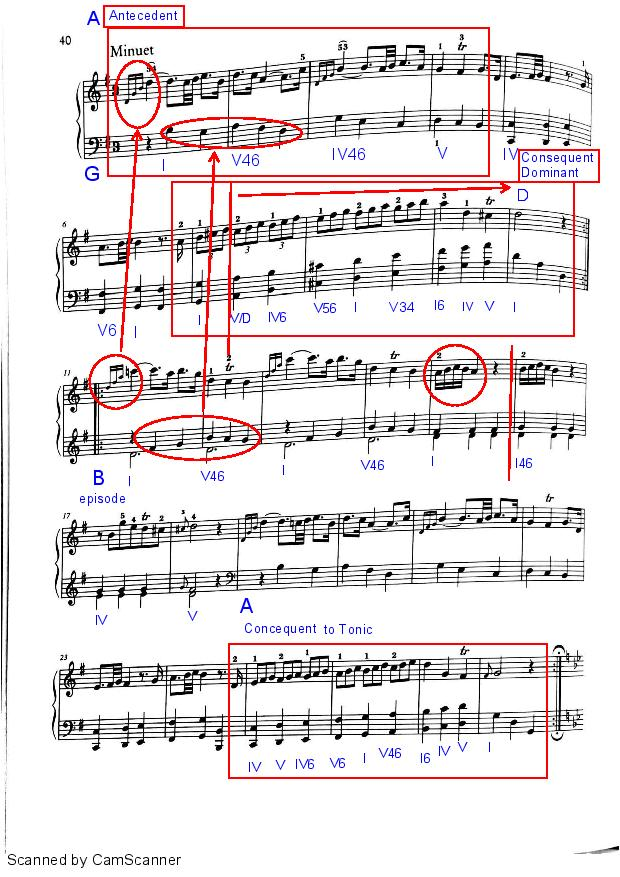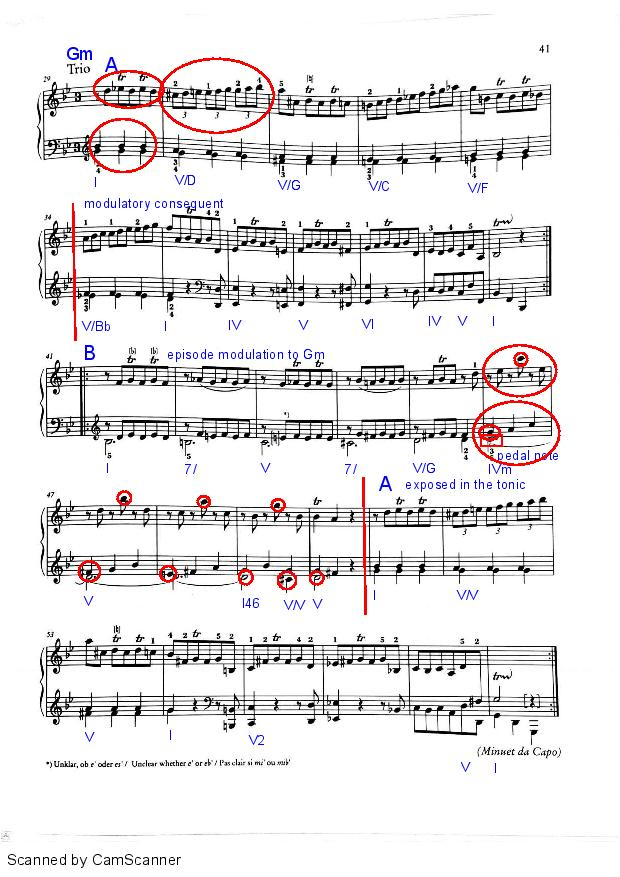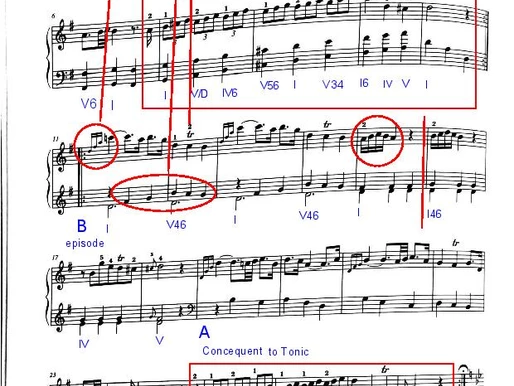Haydn Sonatas, Uncategorized
Haydn Piano Sonata Hob. XVI:6 – Minuet and Trio
Second movement: Minuet and Trio
MINUET AND TRIO FORM

Minuet and Trio: Music definitions
This minuet is laid out in the most traditional manner: a classic A-B-A structure. In terms of the its harmonic plan, it is remarkable to see how each phrase is shaped so it starts from a key and leads to another without the need of an auxiliary episode.
A’s consequent strategically starts on “b” so, by moving stepwise through its focal points, can land on “a”, 5th of D (new key of choice). There is a strong contrast between A’s consequent and antecedent. The last one, arpeggiated, is focused on the upper register accompanied by a simple bass full of leaps. The opposite happens with its consequent which is arranged around an ascending-stepwise line which is ornated in the right hand while powerfully and simply stated by the left hand.
B is simply a re-elaboration of the theme’s head. Its size allows its definition as a sentence. It has its own identity as well, expressed in the addition of the four-semiquaver element -unique to it- on its 4th bar and followed by the quaver cadential section, leading to D, V of G. On the other hand, it doesn’t show the level of contrast witnessed in the texture of A. In this case most of the action happens in the upper register with a bass that is a clear accompaniment.
A is plainly re-exposed with its consequent modified so it cadences to the tonic, giving end to the movement.
TRIO

The harmonic plan is centred around the use of modulatory sequences. Compositionally speaking, the trio replicates the same shape of the Minuet.
A is exposed so its consequent cadences to its relative major key: “Bb”. It has three main defining rhythmic features circled in red. We can clearly see how the double ornament over D on the treble of bar 1 is conceivably meant to prolong D and intensify it towards a dissipating scale heading to the top register. The later bi-bar compound renders itself both expressively and naturally, somehow like designed to remind us of the human voice. It is also remarkable how Haydn deviates the attention from the treble to the bass in the consequent, this aids enormously to the balance in the use of registers through the whole passage. It is also interesting the contrast that exists between the lyric quality of the antecedent, sustained by a clean and ostinato-like bass, while the consequent is rhythmic and enhanced by a powerful, clear and attractive bass line ornated by a colourful, theme-inspired treble.
B on its own way is, in its antecedent, an exacerbation of the first main feature on the right hand of A and in its consequent, a condensation of the main feature on the left hand of A. It is remarkable how the texture profits from the off-beat dislocation of the treble from the bass on bar 46 onwards. Harmonically speaking it brings the attention back to Gm where it stays for the final second movement’s cadence.
A is re-exposed and re-sized so its chord progression brings the section to an end in the tonic Gm.
#HaydnProject #Haydnproject

